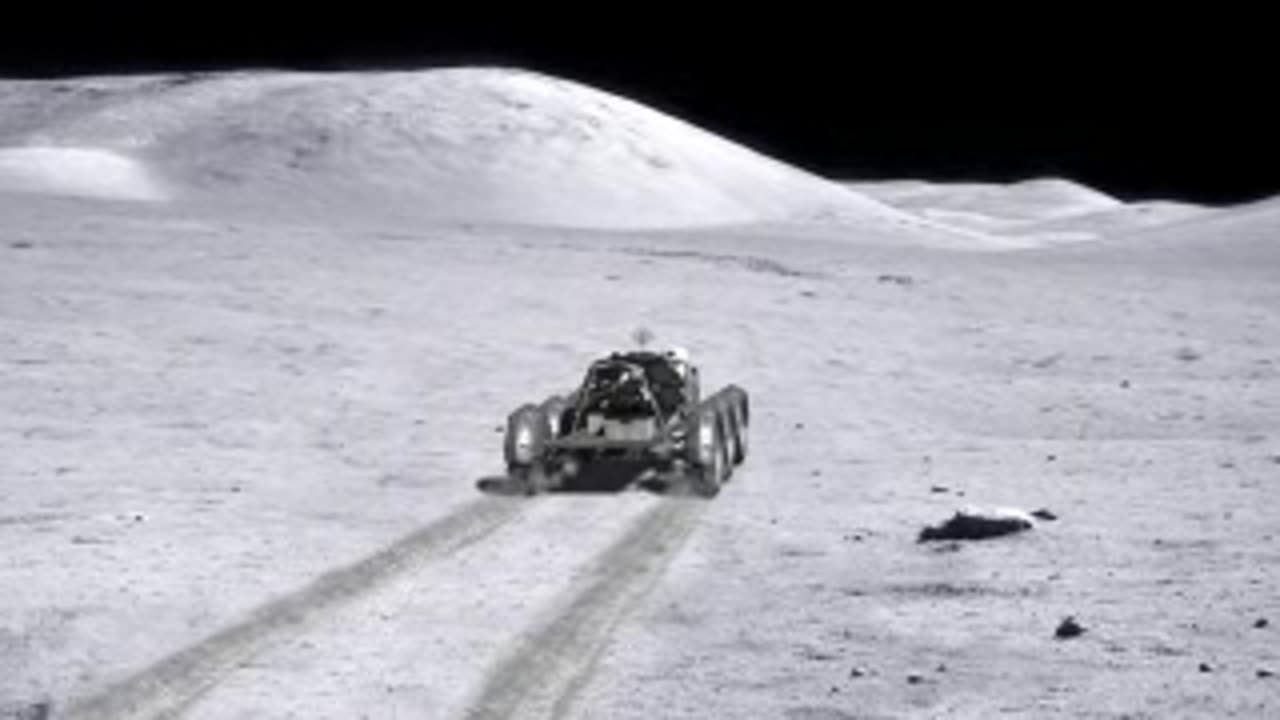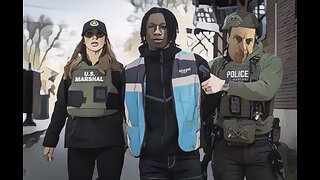Premium Only Content

Lunar Surface _ moon _ Spce
The lunar surface, also known as the Moon's surface, is the outermost layer of Earth's natural satellite, the Moon. It is characterized by its unique landscape and features, which have been shaped by various geological processes over billions of years. Here's a description of the lunar surface:
1. **Regolith**: The lunar surface is covered in a layer of loose, fragmented material called regolith. This regolith consists of fine dust, small rocks, and larger boulders. It's the result of billions of years of meteoroid impacts breaking down the lunar bedrock.
2. **Craters**: Craters are a dominant feature on the Moon's surface. They are formed by the impact of meteoroids, asteroids, and comets colliding with the Moon. Some craters are relatively small, while others are massive and can be hundreds of kilometers in diameter. The most famous of these is the Imbrium Basin, which is visible as a large dark region known as a mare.
3. **Maria (Seas)**: The lunar maria are large, dark, flat areas on the Moon's surface that were formed by ancient volcanic activity. These regions were once thought to be "seas" due to their dark appearance, but they are actually vast plains of solidified lava. The maria are less cratered than the surrounding highlands, indicating that their volcanic activity occurred more recently in the Moon's history.
4. **Highlands**: The lunar highlands are elevated regions covered in impact craters and rugged terrain. These highlands make up the majority of the Moon's surface. Unlike the maria, they are brighter and more heavily cratered due to their older age and lack of volcanic activity.
5. **Rilles**: Rilles are channels or grooves on the lunar surface. They can be classified as either sinuous (meandering like a river) or straight. Some rilles are thought to be the result of ancient lava flows, while others may have been formed by collapsed lava tubes.
6. **Mountains and Ridges**: The Moon also features mountain ranges and ridges. These features were created by the upheaval of the lunar crust during the formation of impact basins or by the compression of the crust.
7. **Valleys**: Lunar valleys, such as Hadley Rille, are elongated depressions on the Moon's surface. Some valleys are believed to be related to the stresses generated by the gravitational interactions between the Earth and the Moon.
8. **Impact Rays**: Many craters on the Moon have distinctive ray patterns radiating outward from their centers. These rays are composed of bright ejecta material that was thrown out during the impact event. They can extend for hundreds of kilometers and are easily visible from Earth.
9. **Lunar Soil**: The lunar soil, or regolith, has a grayish color due to its composition of silicates and small amounts of iron and other elements. It lacks the organic materials found in Earth's soil and has a distinctive powdery texture.
10. **Absence of Atmosphere**: Unlike Earth, the Moon lacks a significant atmosphere. This means there is no weathering, erosion, or significant air pressure on the lunar surface. As a result, the features on the Moon's surface have been preserved for billions of years, providing valuable insights into the solar system's history.
These are just some of the prominent features that make up the lunar surface. The Moon's landscape is a fascinating testament to the geological processes that have shaped it over billions of years.
-
 LIVE
LIVE
Candace Show Podcast
54 minutes agoHYPOCRISY: Blake Lively Improvised Grabbing Her Co-Star's Private Parts | Candace Ep 170
3,590 watching -
 2:11:38
2:11:38
The Quartering
3 hours agoFauci's Wife FIRED, Huge FBI Chat Log LEAK, Trans Mass Shooter Coverup, Liberation Day & More
157K93 -
 1:44:56
1:44:56
Darkhorse Podcast
3 hours agoThe 270th Evolutionary Lens with Bret Weinstein and Heather Heying
26.3K7 -
 LIVE
LIVE
Dr Disrespect
5 hours ago🔴LIVE - DR DISRESPECT - PGA TOUR 2K25 - ONLINE RANKED UNDEFEATED
2,080 watching -
 36:24
36:24
The Brett Cooper Show
1 day ago $5.80 earnedSnow White. What Happened? | Episode 18
35.2K42 -
 LIVE
LIVE
The HotSeat
1 hour agoThe Passing Of An Icon + The Dumbest Statements Of The WEEK!!!
474 watching -
 LIVE
LIVE
Jeff Ahern
1 hour agoNever Woke Wednesday with Jeff Ahern (1pm Pacific)
141 watching -
 18:24
18:24
Talk Nerdy Sports - The Ultimate Sports Betting Podcast
1 hour ago4/2/25 - AI Drops a +2000 Parlay Nuke & Vasil’s Back to Talk His 💩
5.83K1 -
 58:56
58:56
Crypto Power Hour
4 hours ago $0.50 earnedThe #1 Crypto Show On Rumble! ‘In Crypto We Trust |EP09
18.1K3 -
 LIVE
LIVE
LFA TV
17 hours agoLFA TV - ALL DAY LIVE STREAM 4/2/25
1,502 watching